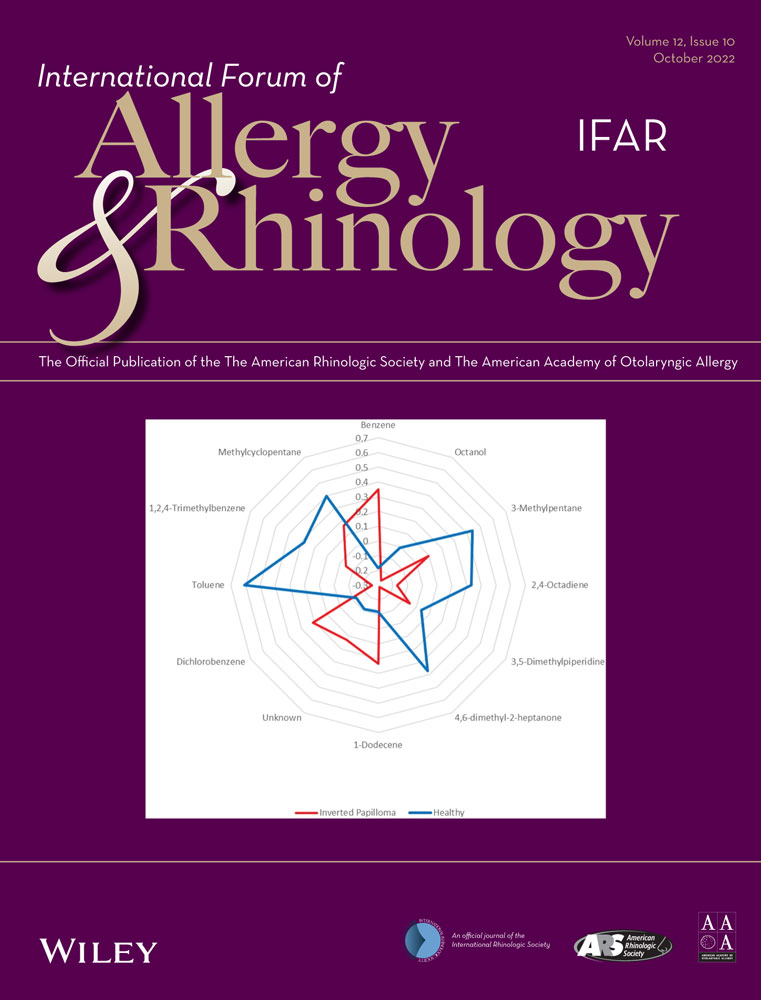Unique volatile metabolite signature of sinonasal inverted papilloma detectable in plasma and nasal secretions
Mark Chaskes and Young Eun Lee share first coauthorship.
Bruce Kimball and Mindy Rabinowitz are co–principal investigators.
Potential conflict of interest: None provided.
View this article at wileyonlinelibrary.com.
Abstract
Background
Sinonasal inverted papilloma (SNIP) is a benign neoplasm with aggressive features, including a high recurrence rate and a propensity for malignant transformation. Accurate diagnosis with complete resection and the need for close long-term surveillance is widely accepted as standard management. In this study, we investigate whether SNIP produces a unique volatile metabolite signature, which may ultimately lead to a novel approach to diagnose and monitor SNIP.
Methods
Whole blood and nasal secretions from patients with SNIP and healthy age-, sex-, and smoking-status-matched controls, were collected. There were 56 blood samples and 42 nasal secretion samples collected. The volatile metabolite signature of SNIP plasma and nasal secretion samples were compared with those of healthy controls using chromatography.
Results
Seventy-two volatiles were identified in plasma samples. Multivariate analysis of variance results, even when controlled for smoking status, indicated toluene as a significant univariate result with lower levels of toluene identified in SNIP plasma samples than healthy control plasma samples. A linear discriminant analysis (LDA) model for plasma volatiles correctly classified 23 of 24 SNIP patients and 26 of 27 control patients, with a cross-validation error rate of 6.02%. Sixty-nine volatiles were identified in nasal samples. For nasal secretion samples, no single univariate response was significant. The LDA model correctly classified 21 of 21 SNIP patients and 11 of 12 control patients, with a cross-validation error rate of 6.55%.
Conclusion
This study suggests that SNIP produces a unique, detectable volatile metabolite signature. With further investigation, this can have dramatic clinical implications for diagnosis and monitoring. Although most volatile metabolite studies have investigated solid-organ malignancy, this novel study addresses a benign sinonasal neoplasm by using nasal secretions and plasma as an analysis medium, representing the first such study.




